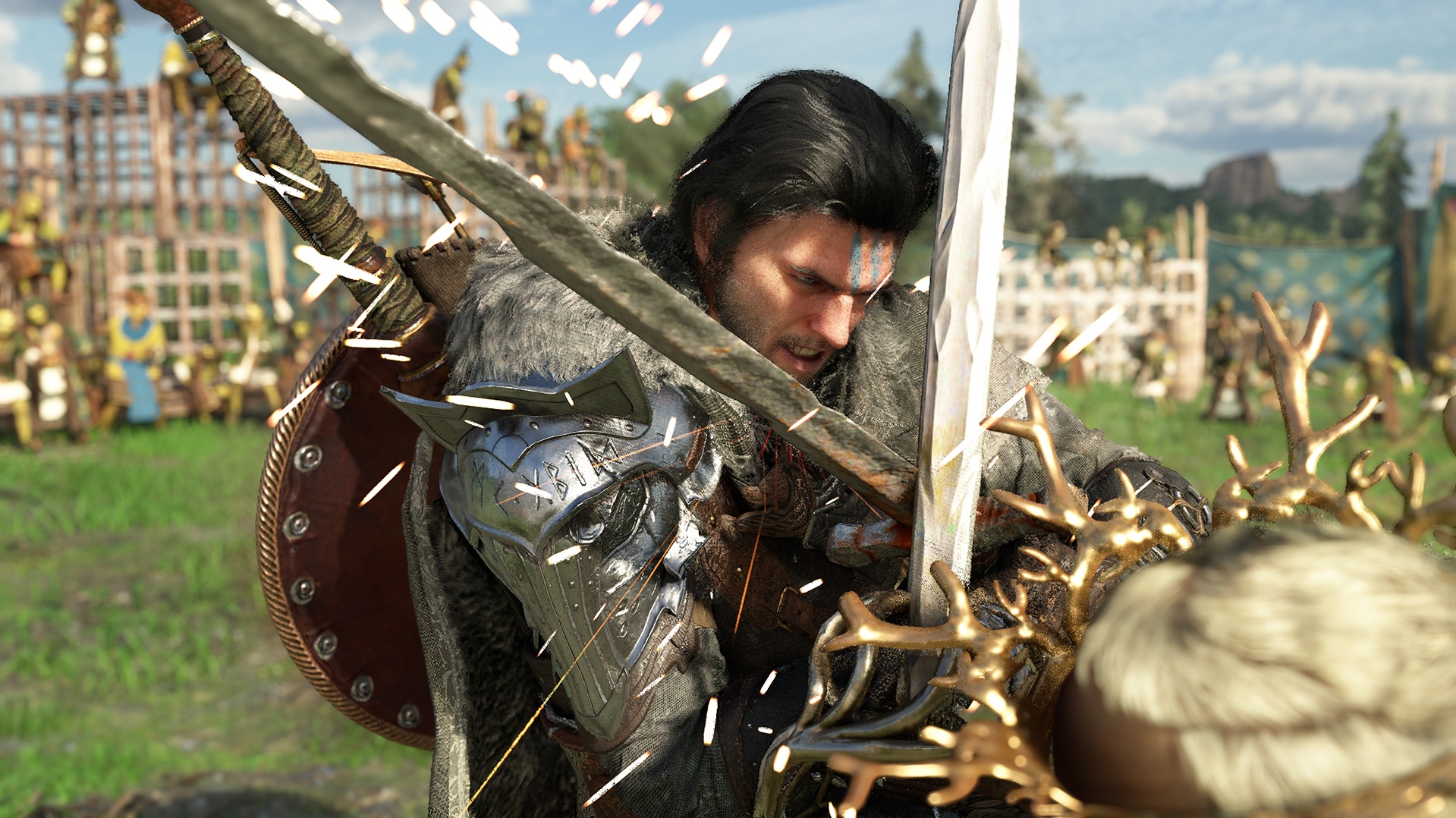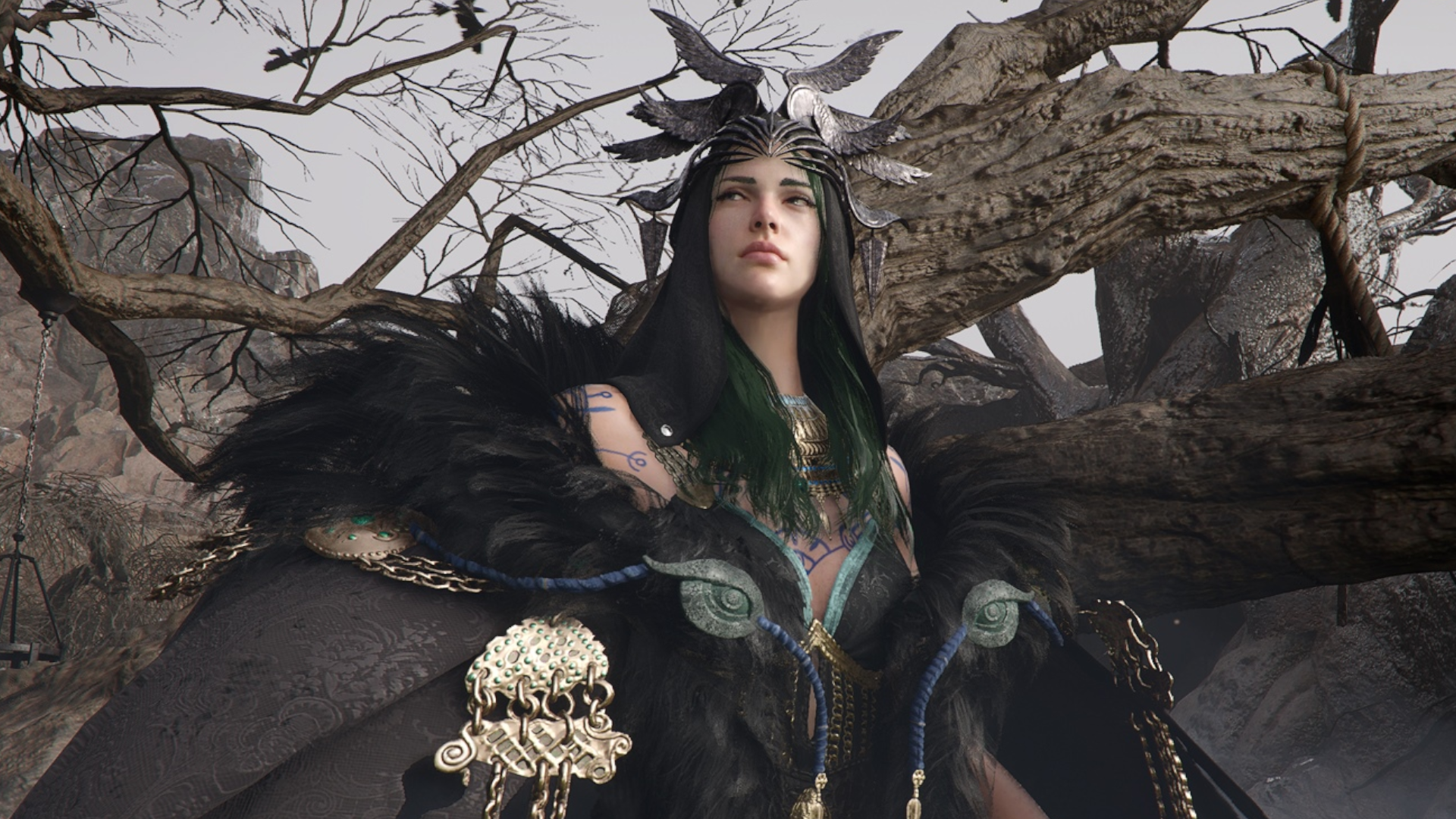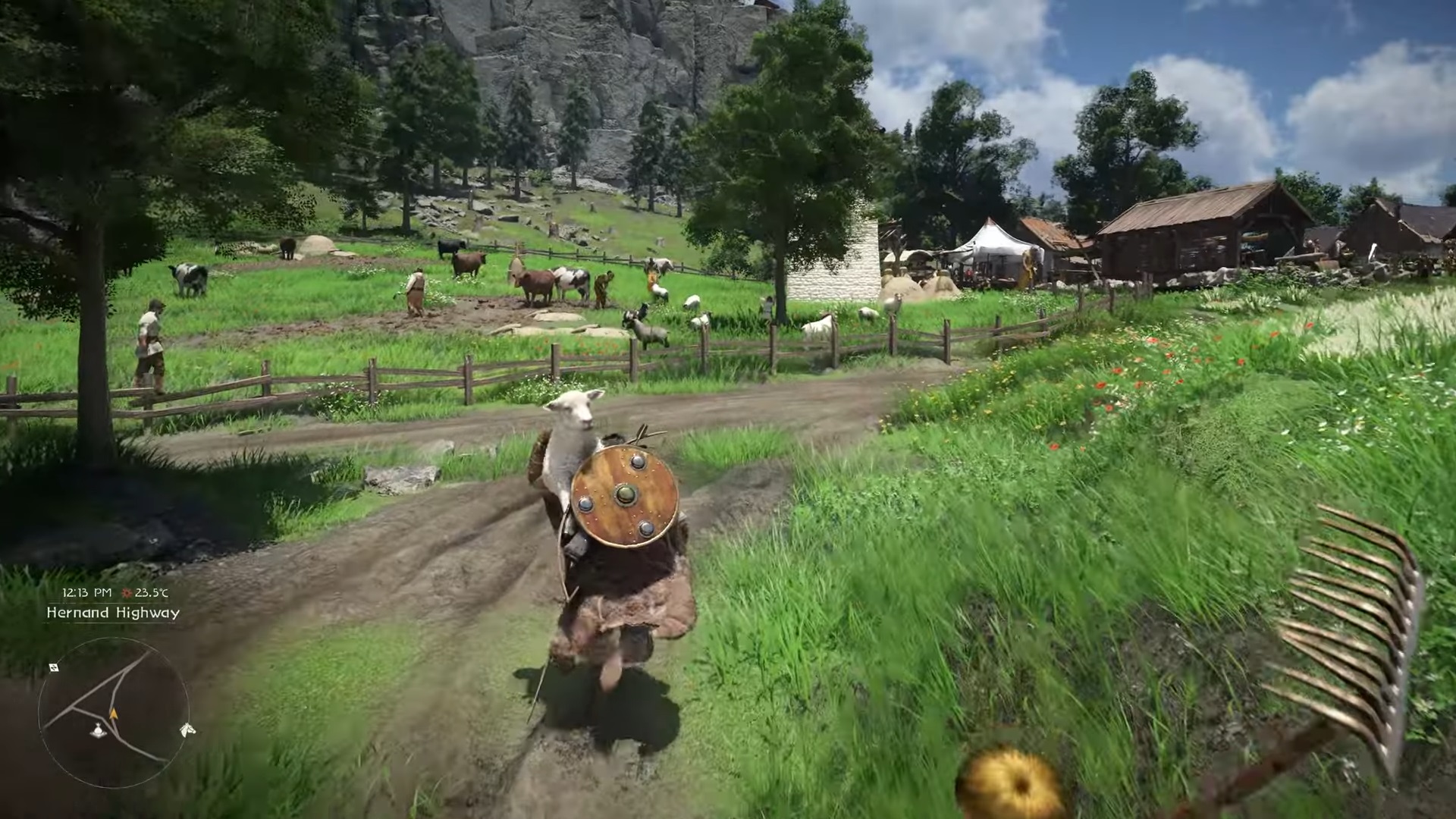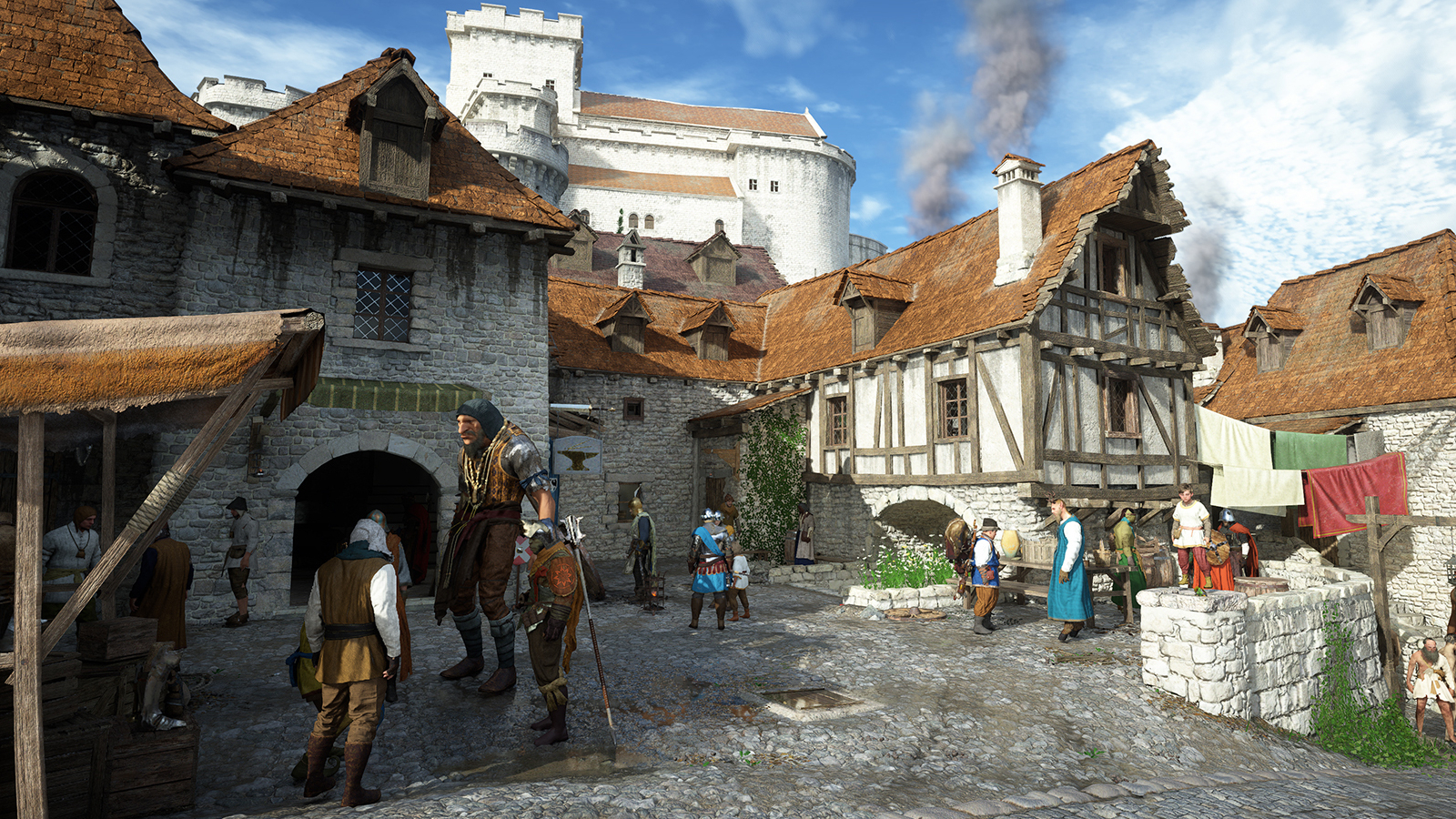
I sat down to play Crimson Desert at Summer Game Fest armed with false confidence. I'd already played a combat demo at an event in 2024, so I charged protagonist Kliff into a battle with dozens of enemy soldiers with the foolhardy impression that remembering the button to swing my sword was good enough. I was instantly curbstomped.
Pearl Abyss has provided the press with lots of opportunities to play Crimson Desert ahead of its still-unspecified 2025 release, and in that time I've seen it described a number of ways: a game for fighting game sickos, a darker Breath of the Wild, The Witcher 3 with a grab button.
All fair comparisons, but one thing my demo copilot insisted I shouldn't call it is an RPG. An "open world action game" is the official messaging, which I took to mean Crimson Desert is as much an RPG as, say, modern Zelda games or Far Cry. There are quests, loot is present, but you're not designing a character from scratch, and the world is largely an action playground.
The SGF demo was our first look at something other than straight combat in Crimson Desert. Our hero Kliff, a notorious mercenary, joins a brewing battle in the northwest region of the map. He does some walking, some talking, loads some cannons, and blows up some nearby watchtowers as target practice. It was here that Pearl Abyss took the chance to point out Crimson Desert's real-time destruction—the towers did crumble nicely, and apparently all destruction in the game is physics-based (not pre-baked animations) thanks to its custom engine.
After test-driving the awesome might of heavy artillery, the demo skipped forward to the middle of a gigantic battle. So began the aforementioned curbstomping: I was gutted, rammed, trampled, and generally ganged up on, but not even ceaseless bullying could stop me from trying to do cool stuff with Crimson Desert's frenetic moveset. Kliff's fighting style is immediately fun because you can do stuff like shoot magic at the ground to launch him in the air, then chain that into a ground pound or slow-mo arrow barrage. Or you can infuse magic into Kliff's sword, unleashing Ninja Gaiden-like combos at ground level.

Ground game
With my limited time, I chose to focus on grabs, the branching options of which felt like the complexity of a fighting game mapped onto a different genre. A stationary grab would slam enemies to the ground, but adding a directional input would toss them, turning them into a projectile. There was also a button combo for picking up guys and spinning them around like a fleshy beyblade, but I kept screwing it up.
I also kept screwing up my other favorite move (air launch, arrow arrow, ground pound), and I don't think it's entirely on me. Crimson Desert's controls remain its true hurdle. All the coolest moves require pressing two to three buttons at once. Launching Kilff in the air? First I had to jump, then I had to press L3 and R3 one at a time to mimic Kliff shooting magic out of his left and right hands. If I hadn't run out of magic juice just getting in the air, I could stay airborne just long enough to trigger slow-mo and maybe shoot an arrow.
Button combos aren't annoying on their own—Pearl Abyss is trying to cram a lot of verbs onto a gamepad, so it's no wonder the controls are hard to pick up when jumping into a random chunk of combat in the middle of the game. What got on my nerves is the noticeable lag between button presses and follow-through. My inputs always felt one step behind the action, like Kliff had to ponder my request to jump before doing it.

Maybe the setup had something to do with it (I was playing the PC version on a big TV with a controller), but I don't think latency is the culprit. More likely is that all those complex button combinations mean the game necessarily has to take a beat after inputs to make sure I want to jump with X and not, for example, charge toward a guy with X+A. I don't know if much can be done about that, but it certainly adds sluggishness to every fight.
One particularly excruciating moment of button tedium came in a boss fight in a throne room. The only way to damage the guy was to wear down his stamina meter to stun him. That gave me a short window to walk up to a broken pillar, press one button to enter magic mode, then another two buttons to levitate the pillar, then rapidly mash another to actually lift it into my hands, then turn and smack him with it before he recovered.
In what is otherwise a combat system that seems to reward experimentation and improv, this forced solution almost felt designed to infuriate—like my own hell of quick-time events designed by David Cage.
Control freak
I'm reluctant to complain that Crimson Desert made me "fight its controls," because usually, I like weird controls. I'm a defender of Metal Gear Solid 2 and 3's absurd "hold and release Square to shoot, lift off lightly to cancel" mechanic (even though not even Kojima gets that weird with controls anymore) because it served the purpose of adding tension to every shot. Weird controls give games languages of their own—they add personality, ingrained muscle memory, and sometimes surprise us with how well they work after an adjustment period.
No such adjustment period has been possible with Crimson Desert in these short preview bursts, but my impression is that its whirlwind of bindings is a mix of sensibly weird (like L3 and R3 to shoot magic out of each hand) and straight up bad.
I also hope Pearl Abyss does another pass on Crimson Desert's grossly excessive particle effects. Any action imbued with magic—sword swipes, arrows, jumps, glides—peppers the screen with particles that camouflage the action in a green and white slurry.
In group combat, this made reading follow-up attacks needlessly difficult as I'd be punished for my own sick magic combos with a screen-wide flashbang. I accept that my brain could attune to the noise after significant playtime, but I point it out because Crimson Desert already has that "overwhelmingly detailed" look to it that's become trendy among modern open world games. Its lush forests and fluttery foliage make for pretty benchmarks and screenshots, but in the same way that Horizon: Forbidden West pushed detail so hard that it often looked too busy in combat, I seriously question if Crimson Desert's flashiness serves the meat of the game (hittin' stuff).

While I'm nitpicking about a game that very well could end up a banger, the way Pearl Abyss continues to show off Crimson Desert also nags at me. We've only seen it in controlled, heavily guided sequences revolving around combat. I've been operating under the assumption that Pearl Abyss is holding back on other core activities—we know from trailers that there are cities, quests, and puzzles somewhere out there—but after my SGF demo, I'm beginning to sense that Pearl Abyss isn't focusing on that other stuff because they're not particularly important.
Crimson Desert is an "open world action game," after all, not an RPG. Maybe that means I should lower my expectations around story, dialogue, quests, and good narrative stuff like that, and instead go into Crimson Desert more like Elden Ring: A big combat playground, and not much more.
I hope I'm wrong about that one, because Elden Ring's exclusive focus on combat was one reason I never finished it. That said, I'm feeling way better about Crimson Desert's gritty, physics-based brawls, if only because it's so different from the wave of FromSoft clones we've been riding for half a decade now.







